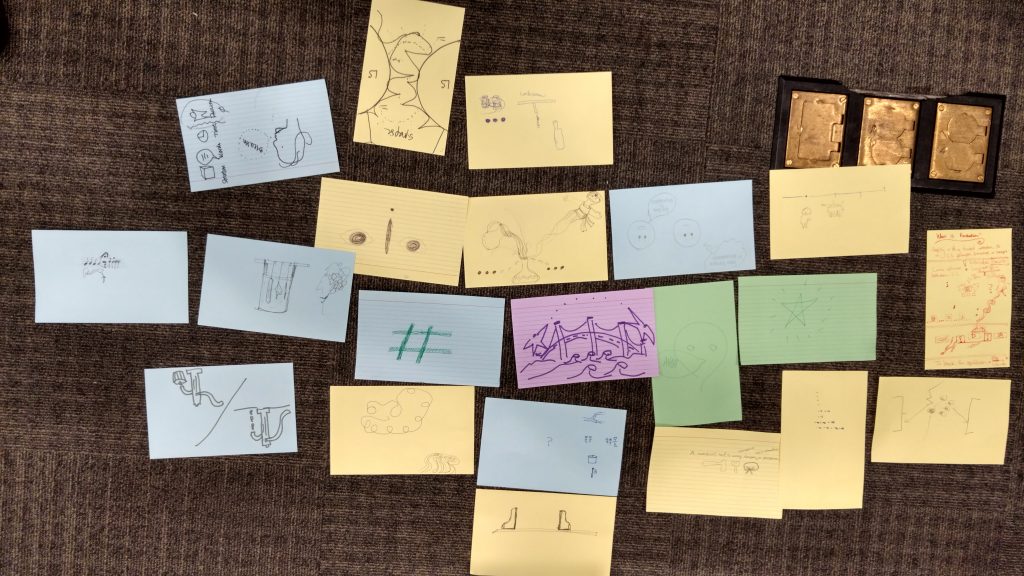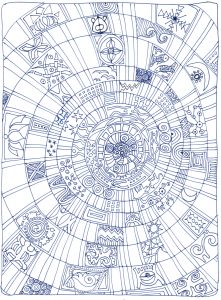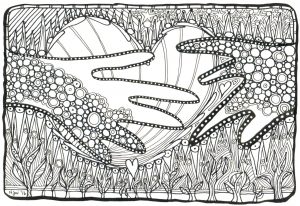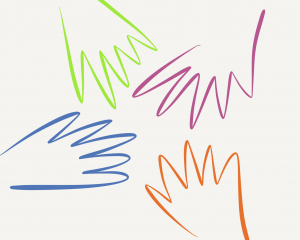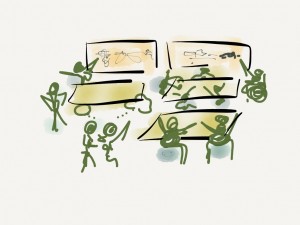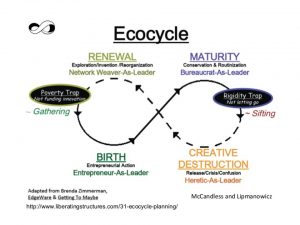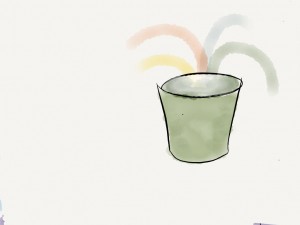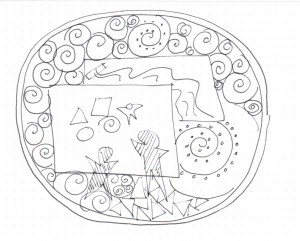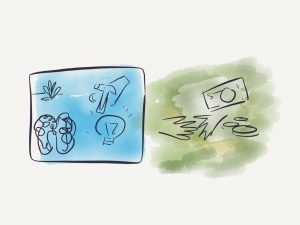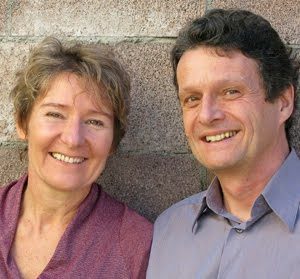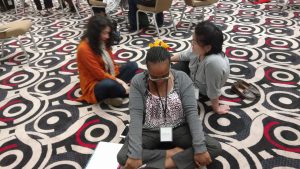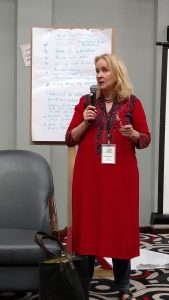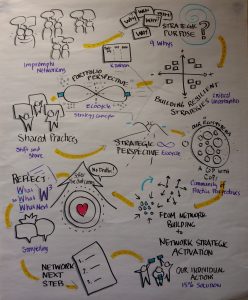(Note: currently the images on this post have gone missing. I’m working on it!)
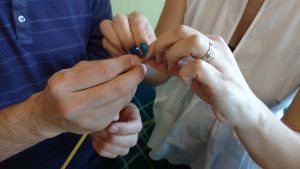 I have developed an enormous backlog of things to write about my learnings from my Liberating Structures practice. Sometimes I need a little kick in the keister, so this tweet got me rolling from @TrustedSharing
I have developed an enormous backlog of things to write about my learnings from my Liberating Structures practice. Sometimes I need a little kick in the keister, so this tweet got me rolling from @TrustedSharing
“Any ideas on events that get people to facilitate using #liberatingstructures? I have a group that wants to learn.”
Introductory/Immersion Events
 Events are certainly one way to get people started using Liberating Structures (LS). Earlier this year Tracy Kelly and I facilitated a two day LS Immersion for the education community up in British Columbia and based on some tweets that have followed on, some (many? Who knows) participants have begun incorporating LS into their teaching and administrative meeting practices. Tracy wrote up a great blog post here: http://www.tracykelly.net/?p=1247 and the BC Campus hosts wrote here https://bccampus.ca/2017/04/05/opening-the-flow-of-learning-with-liberating-structures/ . Both posts highlight some very useful ideas and practices for event based invitations into LS and from a specific domain perspective (in this case education, but imagine other domains!)
Events are certainly one way to get people started using Liberating Structures (LS). Earlier this year Tracy Kelly and I facilitated a two day LS Immersion for the education community up in British Columbia and based on some tweets that have followed on, some (many? Who knows) participants have begun incorporating LS into their teaching and administrative meeting practices. Tracy wrote up a great blog post here: http://www.tracykelly.net/?p=1247 and the BC Campus hosts wrote here https://bccampus.ca/2017/04/05/opening-the-flow-of-learning-with-liberating-structures/ . Both posts highlight some very useful ideas and practices for event based invitations into LS and from a specific domain perspective (in this case education, but imagine other domains!)
Having co-led immersions for the past few years and participating in them for longer, the real clincher for me is to make sure the event isn’t just about LS, but looks closely at the real application “back at home/work” for the participants. When you have groups with some shared purpose, this is magic. When your group is heterogeneous, it can be harder to find that “what, so what, now what” hook that helps people not just get an introduction, but to understand the value proposition of using LS to increase engagement in their work and lives. Real stuff. Tracy wrote it well: “Purpose is the new vision!”
Practitioner/User Groups
Once I was introduced to LS, I thought “yeah, these are good” and then slipped back into my old ways. I needed to experiment and practice with at least one other person to push myself past my own ruts and comfort zones. So after an immersion, it can be super useful to convene lighter, smaller experiences for people to practice, dig deeper and understand how to use LS in their own work. After all, there are tons of riffs, variations and different sequence options.
These groups can be geographic, within a workplace or domain. What matters is getting together. If I use an LS once, that is all fine and good. If I use it twice, I’m beyond the initial twinge of possibility. Repeated use is the “gateway drug” to full use — and all of the rich possibilities of LS.
Here in Seattle we have a deeply playful and creative user group. At the May Seattle users group, Keith (LS co-founder) hosted us to explore “punctuations.” A couple of years ago when some of us retreated for a weekend to play with some emergent structures, I had this sense that we all did these little things in between individual structures, and I described them as punctuation. The term took hold.
When we gathered to play with punctuations, we started with a little meaning making – what DID we mean by a punctuation in the context of LS? Of course, we had to use a little punctuation to elicit our definitions, using a visual riff on Gareth Morgan’s, “What is a Pig” exercise. Hard to see in this picture, but our images had a lot of connectivity and bridging metaphors. Breaths, pauses for soaking in and making sense of an experience. Something that prepares us for what comes next.
Turns out we had some different initial definitions, which grew a bit closer with conversation and some experimentation. For example, Keith was imagining punctuations as affordances for specific structures. For example, how can Fisher Qua’s riffs on Spiral Journal support a deeper “What, So What, Now What?” (There is a picture of the Spiral Journal about half way down this page and hopefully someone is working on writing it up. Hint, hint, you know who you are!) I saw them independent of any particular structure, and called upon as needed, sensing what a group or situation needed. By the end of our What is a Pig Conversation, our senses of the word became intertwined. But darn it, did anyone write down some sort of synthesized definition? I think we were having too much fun.
There were also some emergent threads – maybe principles – that emerged from our play with punctuations.
- There are always many riffs and variations. How do we discern when we are riffing for our own love of riffing, and when we are responding to emergent contexts and adapting and iteratively experimenting forward?
- Our core group of experimenters is in love with clever language. When do we, as Viv McWater’s says, “put down our clever” from Keith Johnstone- noting when others may feel confused or excluded.
- Including many senses might make LS strings (sequences of structures) more flexible and mixable. See the next section for more on this.
- Punctuations are flexible and mixable.
- They elicit things (this deserves more unpacking!) They reveal things.
- They are bridges, synapses.
So practice groups are places for LS to soak in, get clear and “stick!”
Intentional Experiments and Salons
Finally, there are some of us who want to dig in more, play more. A small group here in Seattle have started hosting little experimental “salons” with our first one just a few weeks ago exploring the role of space and movement in the application of LS. You can see a few cryptic pictures here, and yes, I have promised a write up. https://goo.gl/photos/mKNnhtmmNHcrBZ2fA We plan a few more and I am on the hook to organize one around visuals and LS.
That said, there are a few things that became clearer to me as we moved around a beautiful dance studio and reflected on how we use our bodies when we “meet.” The primary driver for these salons and which was clearly visible in the first was we, as facilitators, participants, leaders, engagers, need to remember all our senses. A moving meditation as a group is completely different then asking people to “quietly sit and reflect” in your seats. At the same time, I’ve been working with an amazing network across the developmental disabilities community and I have to carefully attend to abilities and how to invite movement when I’m with a group of diverse people. I’m still feeling quite bad that I did not fully tweak a “Shift and Share” design with quick changeovers that were difficult for folks in wheel chairs. I underestimated the logistical load (not to mention cognitive.) Always learning…When we engage multiple senses, we must attend to design for including everyone.
Friendly Mentoring
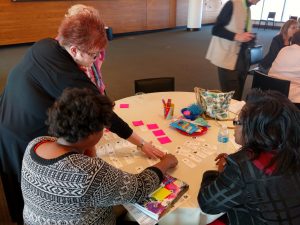 Finally, the thing that has kept me moving my LS practice forward has been the generosity of my mentors, Keith, Fisher, Neil and many others. From a quick phone call or “over coffee” meeting, to our online spaces in Slack and Linked in, the ability to throw out a question, or offer a string of structures for feedback and critique has done the most to inform, deepen and improve my practice. So @TrustedSharing, if you mentor one, the magic is happening!
Finally, the thing that has kept me moving my LS practice forward has been the generosity of my mentors, Keith, Fisher, Neil and many others. From a quick phone call or “over coffee” meeting, to our online spaces in Slack and Linked in, the ability to throw out a question, or offer a string of structures for feedback and critique has done the most to inform, deepen and improve my practice. So @TrustedSharing, if you mentor one, the magic is happening!
